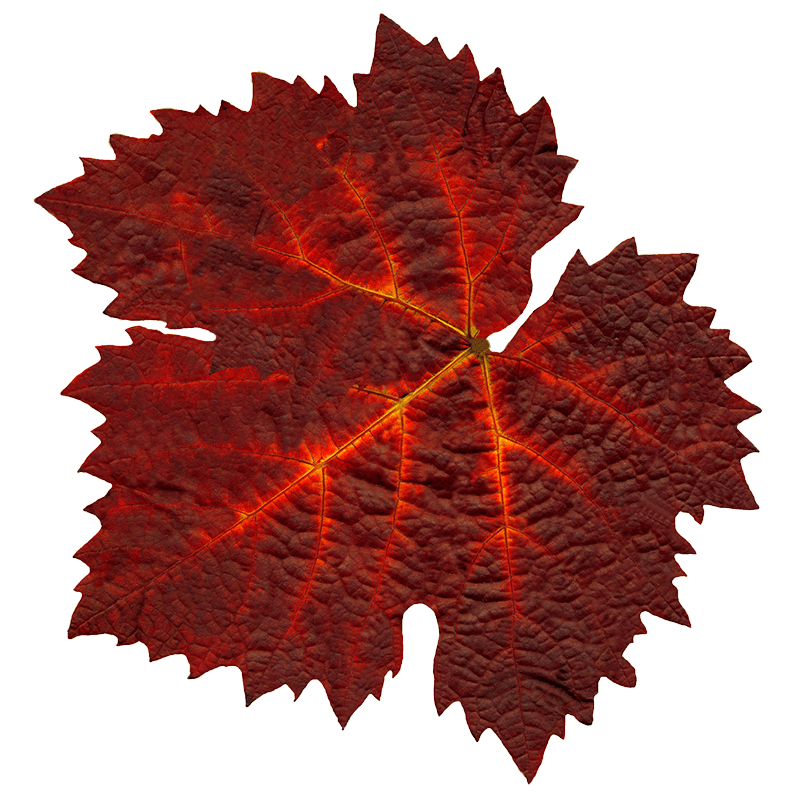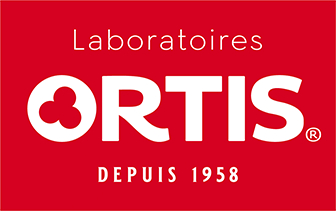
Red vine
Latin name
Origin
Used part
Active components
Tannins, including oligo-proanthocyanidins (OPC) that are mainly contained in the seeds: anti-inflammatory, venotonic, antioxidant.
Flavonoids, including anthocyanins and stilbenes that are mainly held in the skin, and catechins, which are more present in the seeds: anti-inflammatory, venotonic, antioxidant.
Phenolic acids, including gallic acid and caffeic acid, particularly present in the leaves: anti-inflammatory, venotonic, antioxidant.
Usage
Bibliographical references
- Antioxidant Potential Of Grapes (Vitis Vinifera): A Review
Payal Rathi, Chatrasal S Rajput
Journal of Drug Delivery & Therapeutics; 2014, 4(2), 102-104
JDDT: file:///C:/Users/lv/Downloads/776-2313-1-PB.pdf - Procyanidins from Vitis vinifera seeds: in vivo effects on oxidative stress.
Simonetti P1, Ciappellano S, Gardana C, Bramati L, Pietta P.
J Agric Food Chem. 2002 Oct 9;50(21):6217-21.
Pubmed: http://www.ncbi.nlm.nih.gov/pubmed/12358505 - Free radicals and grape seed proanthocyanidin extract: importance in human health and disease prevention.
Bagchi D, Bagchi M, Stohs SJ, Das DK, Ray SD, Kuszynski CA, Joshi SS, Pruess HG.
Toxicology. 2000 Aug 7;148(2-3):187-97.
Pubmed: http://www.ncbi.nlm.nih.gov/pubmed/10962138 - Procyanidins from grape pomace are suitable inhibitors of human endothelial NADPH oxidase.
Álvarez E, Rodiño-Janeiro BK, Jerez M, Ucieda-Somoza R, Núñez MJ, González-Juanatey JR.
J Cell Biochem. 2012 Apr;113(4):1386-96
Pubmed: http://www.ncbi.nlm.nih.gov/pubmed/22134950 - Grape seed proanthocyanidines and skin cancer prevention: inhibition of oxidative stress and protection of immune system.
Katiyar SK.
Mol Nutr Food Res. 2008 Jun;52 Suppl 1:S7 1-6.
Pubmed: http://www.ncbi.nlm.nih.gov/pmc/articles/PMC2562900/ - Inhibition of low-density lipoprotein oxidation by Nagano purple grape (Vitis viniferaxVitis labrusca).
Kamiyama M, Kishimoto Y, Tani M, Andoh K, Utsunomiya K, Kondo K.
J Nutr Sci Vitaminol (Tokyo). 2009 Dec;55(6):471-8.
JSTAGE: https://www.jstage.jst.go.jp/article/jnsv/55/6/55_6_471/_article - Diet enriched with procyanidins enhances antioxidant activity and reduces myocardial post-ischaemic damage in rats.
Facino RM, Carini M, Aldini G, Berti F, Rossoni G, Bombardelli E, Morazzoni P.
Life Sci. 1999;64(8):627-42.
Pubmed: http://www.ncbi.nlm.nih.gov/pubmed/10069526 - Polyphenolic profile, antioxidant properties and antimicrobial activity of grape skin extracts of 14 Vitis vinifera varieties grown in Dalmatia (Croatia)
Višnja Katalinića, Sonja Smole Možinab, Danijela Skrozaa, Ivana Generalića, Helena Abramovičb, Mladen Miloša, Ivica Ljubenkovc, Saša Piskernikb, Ivan Pezod, Petra Terpincb, Mladen Bobane
Food Chemistry Volume 119, Issue 2, 15 March 2010, Pages 715–723
ScienceDirect: http://www.sciencedirect.com/science/article/pii/S0308814609008942 - Antibacterial and antioxidant activities of grape (Vitis vinifera) seed extracts
G.K. Jayaprakasha, Tamil Selvi, K.K. Sakariah
Food Research International 36 (2003) 117–122
RESEACHERS: http://reseachers.wikispaces.com/file/view/Antibacterial+and+antioxidant+activities+of+grape+%28Vitis+vinifera%29+seed+extracts.pdf - Natural Bioactive Compounds from Winery By-Products as Health Promoters: A Review
Ana Teixeira, Nieves Baenas, Raul Dominguez-Perles, Ana Barros, Eduardo Rosa, Diego A. Moreno and Cristina Garcia-Viguera
Int. J. Mol. Sci. 2014, 15, 15638-15678
PMC: http://www.ncbi.nlm.nih.gov/pmc/articles/pmid/25192288/ - Age-related oxidative protein damages in central nervous system of rats: modulatory role of grape seed extract.
Muthaiya Balu, Purushotham Sangeetha, Ganesan Murali, Chinnakannu Panneerselvam
International Journal of Developmental Neuroscience (Impact Factor: 2.69). 11/2005; 23(6):501-7.
ResearchGate: http://www.researchgate.net/publication/7734129_Age-related_oxidative_protein_damages_in_central_nervous_system_of_rats_modulatory_role_of_grape_seed_extract - Cardioprotective effect of grapeseed proanthocyanidin on doxorubicin induced myocardial injury in rats
Int. J. of Pharm. & Life Sci. (IJPLS), Vol. 4, Issue 1: January: 2013, 2288-2293
International Journal of Pharmacy and Life Sciences: http://www.ijplsjournal.com/issues%20PDF%20files/jan-2013/5.pdf - Trans-resveratrol: a magical elixir of eternal youth?
Orallo F.
Curr Med Chem. 2008;15(19):1887-98.
Pubmed: http://www.ncbi.nlm.nih.gov/pubmed/18691046 - Anti-thrombotic effect of proanthocyanidin, a purified ingredient of grape seed.
Sano T, Oda E, Yamashita T, Naemura A, Ijiri Y, Yamakoshi J, Yamamoto J.
Thromb Res. 2005;115(1-2):115-21.
Pubmed: http://www.ncbi.nlm.nih.gov/pubmed/15567462 - Clinical and capillaroscopic evaluation of chronic uncomplicated venous insufficiency with procyanidins extracted from vitis vinifera.
Costantini A, De Bernardi T, Gotti A.
Minerva Cardioangiol. 1999 Jan-Feb;47(1-2):39-46.
Pubmed: http://www.ncbi.nlm.nih.gov/pubmed/10356940 - Antiexudative and capillaritonic effects of procyanidines isolated from grape seeds (V. Vinifera).
Zafirov D, Bredy-Dobreva G, Litchev V, Papasova M.
Acta Physiol Pharmacol Bulg. 1990;16(3):50-4.
Pubmed: http://www.ncbi.nlm.nih.gov/pubmed/1714228 - Anticoagulant effect of polyphenols-rich extracts from black chokeberry and grape seeds.
Bijak M, Bobrowski M, Borowiecka M, Podsędek A, Golański J, Nowak P.
Fitoterapia. 2011 Sep;82(6):811-7
Pubmed: http://www.ncbi.nlm.nih.gov/pubmed/21596108 - Antithrombin effect of polyphenol-rich extracts from black chokeberry and grape seeds.
Bijak M, Saluk J, Ponczek MB, Nowak P.
Phytother Res. 2013 Jan;27(1):71-6.
Pubmed: http://www.ncbi.nlm.nih.gov/pubmed/22473647 - Immunomodulatory activity of a new family of antioxidants obtained from grape polyphenols.
Mitjans M, del Campo J, Abajo C, Martínez V, Selga A, Lozano C, Torres JL, Vinardell MP.
J Agric Food Chem. 2004 Dec 1;52(24):7297-9.
Pubmed: http://www.ncbi.nlm.nih.gov/pubmed/15563210 - Therapeutic effect and mechanism of proanthocyanidins from grape seeds in rats with TNBS-induced ulcerative colitis.
Li XL, Cai YQ, Qin H, Wu YJ.
Can J Physiol Pharmacol. 2008 Dec;86(12):841-9.
Pubmed: http://www.ncbi.nlm.nih.gov/pubmed/19088805 - Potential anticancer properties of grape antioxidants.
Zhou K, Raffoul JJ.
J Oncol. 2012;2012:803294.
PMC: http://www.ncbi.nlm.nih.gov/pmc/articles/pmid/22919383/ - Procyanidins from Vitis vinifera seeds inhibit the respiratory burst of activated human neutrophils and lysosomal enzyme release.
Carini M, Stefani R, Aldini G, Ozioli M, Facino RM.
Planta Med. 2001 Nov;67(8):714-7.
Pubmed: http://www.ncbi.nlm.nih.gov/pubmed/11731911 - Antihypertensive, vasodilator and antioxidant effects of a vinifera grape skin extract.
Soares De Moura R1, Costa Viana FS, Souza MA, Kovary K, Guedes DC, Oliveira EP, Rubenich LM, Carvalho LC, Oliveira RM, Tano T, Gusmão Correia ML.
J Pharm Pharmacol. 2002 Nov;54(11):1515-20.
Pubmed: http://www.ncbi.nlm.nih.gov/pubmed/12495554
The health claims that feature on our website in relation to the plants contained in our products are compliant with the list of health claims awaiting final assessment by the Community authorities (cf. website of the European Commission: http://ec.europa.eu/nuhclaims/). However, they may be subject to modification following their assessment by the national competent authorities.
The health claims relating to other nutrients or substances contained in our products that feature on our site are compliant with Regulation No. 432/2012 of the Commission of 16 May 2012 which establishes a list of authorised health claims authorised in relation to food products, other than those in reference to the reduction of the risk of disease as well as community-based development and child health (cf. website of the European Commission: http://ec.europa.eu/nuhclaims/).

 Belgique
Belgique  België
België  France
France  Italia
Italia  Portugal
Portugal  España
España  United Kingdom
United Kingdom  Κύπρος
Κύπρος 